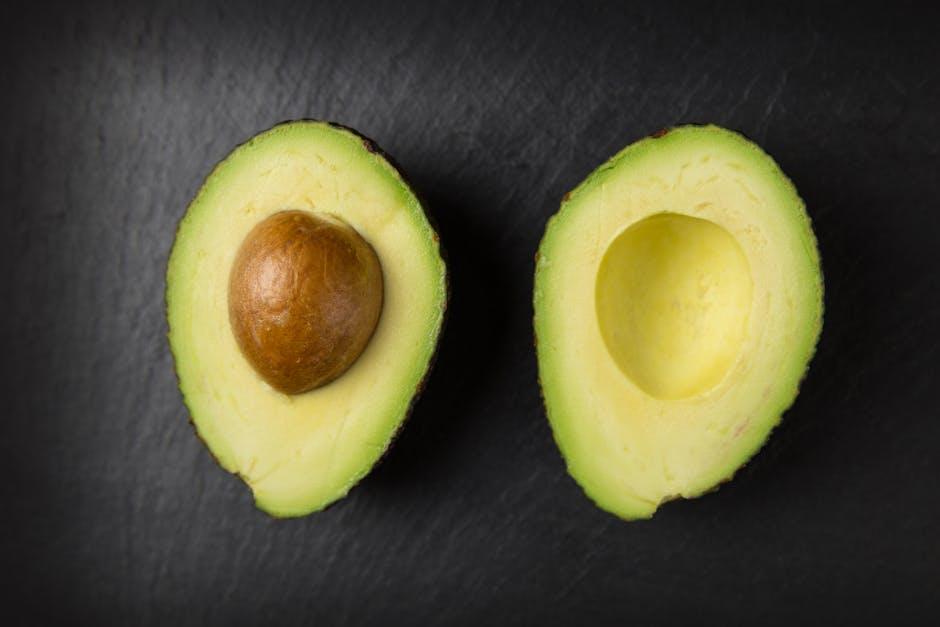Embarking on a ketogenic lifestyle is like setting out on a carefully charted adventure—one where each meal and snack serves as a stepping stone toward your health goals. At the heart of this journey lies the art of tracking macros, the meticulous process of balancing fats, proteins, and carbs to keep your body thriving in a state of ketosis. But for many, the question remains: how do you accurately track macros on keto without getting lost in a sea of numbers and nutritional labels? This article will guide you through practical strategies and essential tips to make macro tracking not just manageable, but a natural part of your daily routine. Whether you’re a seasoned keto traveler or just starting your expedition, mastering this skill is key to unlocking the full potential of your low-carb lifestyle.
Understanding Macronutrients on a Keto Diet
On a ketogenic diet, the balance of macronutrients is crucial to keeping your body in a state of ketosis. Unlike traditional diets that focus heavily on calorie counting, keto demands a strategic distribution of fats, proteins, and carbohydrates. Typically, your daily intake should consist of 70-75% fats, 20-25% protein, and a strict limit of 5-10% carbohydrates. This unique ratio enables the body to shift from burning glucose to burning fat for energy, igniting the metabolic magic that defines keto. Understanding not just the quantity but the quality of each macro is equally important for maintaining overall health and sustaining energy levels.
To simplify your macro tracking, here’s a quick reference below detailing ideal nutrient proportions and examples of keto-friendly food sources. Use this as a guide to tailor your meals without second-guessing your choices:
- Fats: Avocados, olive oil, nuts, and seeds
- Proteins: Grass-fed meats, fatty fish, eggs
- Carbohydrates: Leafy greens, broccoli, cauliflower
| Macronutrient | % of Daily Intake | Function in Keto |
|---|---|---|
| Fats | 70-75% | Primary energy source |
| Proteins | 20-25% | Muscle maintenance & repair |
| Carbohydrates | 5-10% | Minimal glucose for essential functions |
Choosing the Right Tools for Accurate Macro Tracking
When it comes to precision in macro tracking on a ketogenic diet, selecting the right tools makes all the difference. Apps tailored specifically for keto, such as Carb Manager or Senza, offer intuitive interfaces that focus on tracking fats, proteins, and carbs without overwhelming you with unnecessary information. These apps provide extensive food databases, barcode scanning, and even recipe importing features, streamlining your tracking process. Additionally, pairing apps with a reliable digital kitchen scale ensures that you measure your portions accurately, preventing guesswork and promoting consistency in your daily intake.
Beyond apps and scales, consider integrating wearable fitness trackers or smart hydration monitors for a holistic approach to health. These devices can offer insights into how your body responds to your keto macros, complementing your dietary efforts with biometric data. To make your tool selection easier, here’s a quick comparison of popular macro tracking tools:
| Tool | Key Features | Best For |
|---|---|---|
| Carb Manager | Comprehensive keto-focused database, barcode scanner, meal planner | Keto beginners and advanced trackers |
| Senza | Clean interface, fasting tracker, macro tracking | Users combining keto with intermittent fasting |
| Digital Kitchen Scale | Accurate weight measurement, compact, easy to clean | Precision in portion control |
| Fitness Wearables | Activity tracking, heart rate monitoring, sleep analysis | Holistic health tracking alongside diet |
Balancing Fat Protein and Carbohydrates for Optimal Keto Results
Achieving the perfect harmony between fat, protein, and carbohydrates is essential for maximizing the benefits of a ketogenic lifestyle. While fat serves as the primary fuel source, it’s important to consume enough protein to preserve muscle mass and support metabolic functions without tipping the balance into gluconeogenesis, which can slow ketosis. Carbohydrates, though severely restricted, must be carefully chosen and measured to maintain blood glucose stability without kicking you out of ketosis. Striking this balance ensures sustained energy, mental clarity, and optimal fat burning.
Consider using these simple strategies to tailor your macronutrient profile effectively:
- Track fat intake: Aim for fats to make up around 70-75% of your daily calories, emphasizing healthy sources like avocado, olive oil, and nuts.
- Prioritize quality protein: Moderate protein intake to about 20-25%, focusing on grass-fed, pasture-raised, or wild-caught sources to maintain muscle without excess.
- Limit net carbs: Keep carbohydrates under 5-10% of your daily intake, choosing fibrous vegetables and low-glycemic berries.
| Macro | Recommended % of Calories | Key Sources |
|---|---|---|
| Fat | 70-75% | Avocado, Olive Oil, Nuts, Butter |
| Protein | 20-25% | Eggs, Chicken, Grass-fed Beef, Fish |
| Carbohydrates | 5-10% | Leafy Greens, Broccoli, Berries |
Interpreting Your Macro Data to Adjust Your Keto Plan
Once you have your macro data, it’s essential to dive deep into what those numbers really mean for your progress. Start by comparing your actual intake against your target ratios—fat, protein, and carbs—to identify patterns or deviations. For example, consistently consuming too many carbs can stall ketosis, while not eating enough fat might leave you feeling fatigued. Use this data to tweak your food choices or meal planning, ensuring your macros align with your goals without feeling restrictive.
Consider tracking your energy levels, mood, and digestion alongside the macro numbers. Here’s a handy reference to evaluate your macro balance:
| Macro Issue | Possible Effect | Adjustment |
|---|---|---|
| Too many carbs | Blood sugar spikes, stalled ketosis | Reduce starchy vegetables, swap for leafy greens |
| Low fat intake | Low energy, constant hunger | Add healthy fats like avocado, olive oil |
| Excess protein | Converted to glucose, impacting ketosis | Moderate protein portions, focus on fats |
- Adjust gradually: Small changes can help your body adapt without shock.
- Listen to your body: Hunger cues and energy shifts often signal necessary tweaks.
- Stay consistent: Tracking over time paints a clearer picture than day-to-day fluctuations.
Tips for Staying Consistent and Overcoming Common Tracking Challenges
Consistency in macro tracking on keto is built on creating a routine that fits your lifestyle seamlessly. Start by prepping your meals in advance and using a digital scale to measure portions accurately. Don’t rely on memory—logging your food immediately after eating can prevent errors and forgotten entries. Incorporate user-friendly apps that sync with your smartphone to provide real-time feedback, which makes tracking less of a chore and more of an engaging daily habit. Set reminders or alarms to prompt you to log meals, especially during busy days when it’s easy to overlook details.
Common hurdles such as dining out, ingredient variations, and fluctuating macro counts can be navigated with simple strategies. When eating out, choose meals with clear protein, fat, and carb sources, and estimate portions cautiously with the help of restaurant nutrition info if available. Keep a list of go-to keto-friendly snacks and meals for emergency situations, so you’re never caught unprepared. Remember, it’s okay to adjust macros slightly if exact tracking isn’t possible; the goal is consistency over perfection. Use the table below as a quick-reference cheat sheet to help decode typical restaurant dishes and their estimated macros:
| Dish | Estimated Protein (g) | Estimated Fat (g) | Estimated Carbs (g) |
|---|---|---|---|
| Grilled Chicken Salad | 30 | 15 | 8 |
| Bunless Burger with Cheese | 25 | 35 | 4 |
| Avocado & Bacon Omelette | 20 | 28 | 5 |
| Steak with Steamed Veggies | 40 | 20 | 7 |
Q&A
Q&A: How to Track Macros on Keto
Q: What does “tracking macros” mean on a ketogenic diet?
A: Tracking macros means keeping a close eye on the grams of fat, protein, and carbohydrates you consume daily. On keto, this helps ensure your body enters and stays in ketosis by limiting carbs, moderating protein, and encouraging fats.
Q: Why is tracking macros important for keto success?
A: Keto is a metabolic game-changer. Eating too many carbs can kick you out of ketosis, while too little protein can hinder muscle health. Tracking macros keeps you in the sweet spot where your body burns fat efficiently.
Q: What are the typical macro ratios for keto?
A: Generally, keto macros break down to about 70-75% fat, 20-25% protein, and 5-10% carbs. Exact ratios vary by individual goals, but fat remains king.
Q: How do I calculate my daily macro needs on keto?
A: Start by determining your calorie needs based on weight, activity, and goals. Then, apply keto’s macro percentages to those calories, converting them to grams (fat = 9 cal/g, protein and carbs = 4 cal/g).
Q: What tools can help me track macros easily?
A: Apps like MyFitnessPal, Carb Manager, or Cronometer allow you to log food and see your macro breakdown in real time, making it easier to stay on track.
Q: Can I track macros without obsessing over every bite?
A: Absolutely. Many keto enthusiasts track macros diligently during the first few weeks, then get a feel for their limits. Flexibility and mindfulness go hand-in-hand on a sustainable keto journey.
Q: How do I handle “hidden” carbs in foods?
A: Always read nutrition labels and watch for sneaky carbs in sauces, dressings, and processed foods. Using tracking apps helps highlight these hidden carbs so you can avoid exceeding your limit.
Q: What if I don’t hit my macro goals perfectly every day?
A: Perfection isn’t required. Aim for consistency over time rather than daily exactness. Your body responds to broad macro patterns more than precise numbers.
Q: Is protein intake on keto different from other diets?
A: Keto typically calls for moderate protein—not too high, not too low—because excess protein can convert to glucose and disrupt ketosis.
Q: Any final tips for mastering macro tracking on keto?
A: Patience and practice. Start with common keto staples, measure once or twice, use tools to track, and listen to your body. Over time, tracking becomes second nature, freeing you to enjoy keto without stress.
Insights and Conclusions
Tracking macros on a keto journey doesn’t have to feel like decoding a secret recipe. With the right tools, a bit of patience, and a clear understanding of your nutritional goals, you can turn the art of macro counting into a simple, empowering habit. Remember, it’s not about perfection but progress—each tracked meal brings you one step closer to mastering your keto lifestyle and unlocking the health benefits you seek. So, equip yourself with knowledge, trust the process, and enjoy the ride toward your best self.

